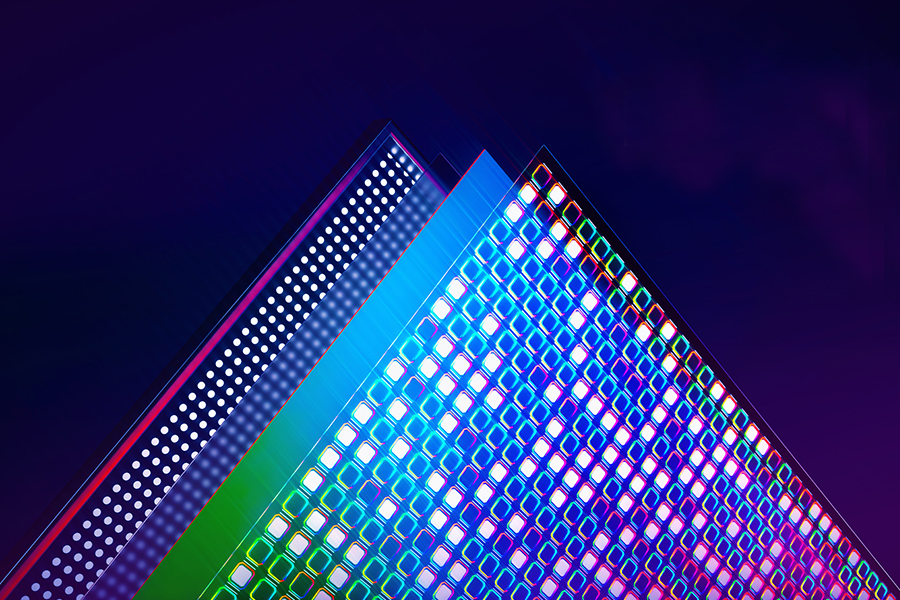
By Greg Gao
(JW Insights) Apr 23 -- China’s display panel makers are cooperating with Japanese manufacturers JDI and JOLED in accelerating the mass production of lower-cost eLEAP OLEDs and printed OLEDs in a challenge to South Korea’s long-time monopoly in the large-size OLED market, said a recent JW Inisghts report.

Despite China's base in low-cost OLEDs, the country has the potential to change the global large-size OLED panel market and increase its market share of OLED TVs.
China has become the world’s largest LCD panel production base. Meanwhile, South Korea still dominates the large-size OLEDs.
Currently, large-size OLED panels around the world are exclusively supplied by South Korean manufacturers. LG Display (LGD) produces W-OLED, while Samsung Display focuses on QD-OLED. However, the production costs of these two technical directions are relatively high, and they have only found success in the high-end television market.
LGD has enjoyed dominant position in the global large-size OLED panel market for a long time. In 2013 since OLED television became an industry buzzword. Both Samsung Display and LGD began mass-producing large-size OLEDs.
However, Samsung Display chose the wrong technology path, and its large-size OLED yields were too low, forcing the company to temporarily abandon the technology and focus on QLED instead.
Meanwhile, LGD focused on W-OLED technology, continuously improving its production process and increasing yields and production capacity. As a result, W-OLED began to penetrate the high-end television market. In 2022, global OLED TV shipments were about 6.29 million units, and in 2023 it is expected to reach 7.41 million units.
While South Korea continues to strengthen its dominance in the large-size OLED market, China’s panel makers also began to make forays into this area. The country’s display giant BOE has set up a trial line in Hefei, central China’s Anhui Province, for W-OLED and printed OLED. It has developed the world’s first 55-inch 8K printed OLED, 95-inch 8K W-OLED, and 55-inch 8K printed AMQLED.
TCL Technology, another display titan in China, established the National Printing and Flexible Display Innovation Center and invested in a 4.5-generation printed OLED trial line in Guangzhou, southeastern China’s Guangdong Province, through its subsidiary. The company has also developed a 31-inch QD-OLED, 31-inch electroluminescent diode (QLED), 31-inch printed foldable OLED, and 65-inch 8K printed OLED.

Other Chinese display panel manufacturers such as HKC(惠科), Visionox(维信诺) are also making trying to enter the large-size OLED market.
If Chinese manufacturers follow the W-OLED or QD-OLED technology route, not only will it be difficult to avoid the relevant patents of South Korean companies, but they will also face the high costs of the technology.
Large-size OLED panels require differentiated process solutions with lower costs, so printing OLEDs, eLEAP OLEDs, etc., have become important directions for Chinese panel makers. They cooperated with Japanese manufacturers, with long-term technology accumulation in printed OLED and eLEAP OLED.
In 2020, TCL CSOT(TCL华星光电) signed an investment agreement with JOLED, a Japanese display technology company incorporated in 2015 as the result of a consolidation of the OLED business units of Panasonic and Sony, to invest Ұ 30 billion($223.6 million) in JOLED and obtain a 10.76% stake in the company. In the past two years, TCL CSOT has acquired product development and process technology accumulation on the JOLED production line, obtained patent authorization related to printed OLED, and developed the world’s first 65-inch 8K printed OLED sample.
On April 7, HKC and JDI(Japan Display Inc) signed a memorandum of understanding (MOU) to establish a strategic alliance. The two parties will work together to carry out long-term and comprehensive cooperation in next-generation eLEAP OLED, joint R&D center, and high-end automotive panel business. They jointly built the world’s most advanced eLEAP OLED panel factory, aiming to start mass production in 2025.
The total investment for the joint project could amount to hundreds of billions of yen, the Japanese firm said. HKC will cover the costs of factory construction while JDI will provide the expertise for manufacturing the product.
If TCL CSOT’s printed OLEDs and HKC’s eLEAP OLEDs can be successfully mass-produced, it will not only break South Korea’s domination in large-size OLEDs, but also may even further lead the way, an industry analyst pointed out.
However, Chinese panel makers are also facing daunting technology challenges. The mass production of printed OLEDs is not progressing smoothly, eLEAP OLED is still in the testing stage. Chinese makers, including TCL CSOT and HKC, still have a long way to go.








